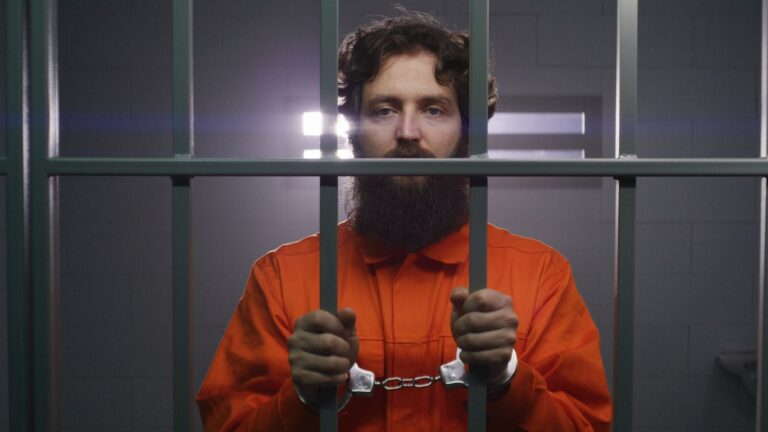For those who have never been inside, prisons can seem like a mysterious and daunting place, often misunderstood due to their dramatic portrayals in the media. In reality, daily life for inmates is shaped by strict routines, rules, and everyday tasks. This list offers a glimpse into the unique objects and procedures that are part of life behind bars.
Riot Alarms

The piercing shriek of a riot alarm is a terrifying sound in a prison setting, signaling that inmates are out of control and likely to be acting destructively or even violently. Unfortunately, as opposed to curbing unruly behavior, such alarms tend to spark further chaos among those prisoners who weren’t initially misbehaving.
Structured Days

Most of us have a daily schedule, especially at work or school, but this is unlikely to compare to the rigid structure of prison life. There’s little room for spontaneity in prison, with the clock dictating when inmates wake, eat meals, work, exercise, and sleep. This controlled lifestyle is necessary to maintain order while facilitating staff management and shifts.
Solitary Confinement

A cell designated for solitary confinement as a safety necessity or punishment is designed to isolate dangerous or unruly inmates and keep them separated from other prisoners. Typically, they’re placed in a small, windowless cell with minimal human contact for extended periods of time, sometimes resulting in psychological trauma.
Few Possessions

Inmates are allowed very few personal belongings for several reasons. Firstly, because items can create problems in a prison environment (like jealousy or theft) or be used to conceal forbidden items or substances. The prison cannot guarantee that items won’t be broken or stolen either. Typically, prisoners are only allowed basic clothes, toiletries, and books.
Fenced Perimeters

Security is understandably of paramount concern in prisons, particularly those housing inmates who are known to be violent or sadistic. Zaun Ltd states that the average prison fence is 5.2 meters tall, with those at maximum security facilities being higher still. They’re often electrically charged or topped with razor wire, with additional guard towers, sensors, and security cameras.
Censored Communication

Most free citizens have enjoyed uncensored communication since the last World War, yet communication with the outside world is heavily restricted for prison inmates. Their letters may be read by prison staff, and phone calls are often monitored. Video conferencing may be available in some facilities, but it is also heavily recorded and controlled.
Prison Gangs

Gangs can hold significant power within prisons, which have their own unique set of social rules and acceptable behaviors. Sometimes, a few influential prisoners control drug trafficking and access to specific resources. Inmates may choose to align themselves with gangs for protection or a sense of belonging, creating a complex hierarchy that newcomers are quick to learn.
Contraband

Anything not authorized by prison officials is considered contraband, including cigarettes, drugs, phones, weapons, and even seemingly harmless items like playing cards or nail scissors. Inmates often resort to creative ‘smuggling’ techniques to obtain certain forbidden items, prompting guards to conduct regular cell searches and confiscate any contraband they find.c
Sensory Deprivation

The isolation and lack of stimulation inside prisons can lead to sensory deprivation, particularly for those in solitary confinement. Scientific American reports that Robert King spent 29 years alone in a 6 x 9 x 12′ cell for 23 hours a day, and he admitted that he was not sane. Limited access to nature, sunlight, and social interaction can permanently impact a prisoner’s mental health.
Payphones

On the outside, payphones are a relic of a bygone era because everyone has their own smartphone. But in prison, personal phones are forbidden, and communication is restricted. Most inmates are allowed to make outgoing calls to pre-approved numbers using payphones, although these calls are monitored and often have time limits.
Visiting Rooms

Most non-violent prisoners are permitted to contact pre-vetted friends, family members, and legal representatives. Prisons provide designated visiting rooms or booths, typically sterile and brightly lit, allowing guards to observe visitors easily. Separating barriers made of Plexiglass or secure mesh wire may even divide visitors from the inmates.
Exercise Yards

Physical activity outside is considered a human right for most inmates, so prisons provide access to outdoor enclosures, typically surrounded by high fences, at specific times each day. The fresh air and the opportunity to stretch their legs are considered beneficial. However, the size of such spaces and the amenities vary significantly between correctional institutions.
Limited Educational Opportunities

While some prisons offer educational programs and vocational training, these opportunities are often limited. Prisoners with very long sentences or those who are dangerous may not be offered rehabilitation or prepared in any way to re-enter society. However, some inmates take advantage of such programs and use their abundant free time to learn valuable skills.
Cell Blocks

There aren’t any spacious apartments or luxury furnishings in prisons—inmates typically reside in cell blocks, large buildings containing multiple tiers of cells. These cells may be for a single occupant or hold several inmates, often with bunk beds. Within a cell block, further subdivisions called “pods” can allow for some social interaction among smaller groups.
Prison Food

Prison is a punishment at the government’s expense, so unsurprisingly, prison food focuses on being calorie-sufficient and cost-effective, and portion size is heavily controlled. There is limited variety, with carbohydrates and cheap protein as the staple and few fresh fruits and vegetables. Often, prisoners describe these meals as bland and repetitive.
Prison Officers

Without prison officers, these chaotic environments would be far more problematic. They play a critical role in maintaining order and safety within correctional facilities and are also tasked with responding to emergencies and transporting inmates.

